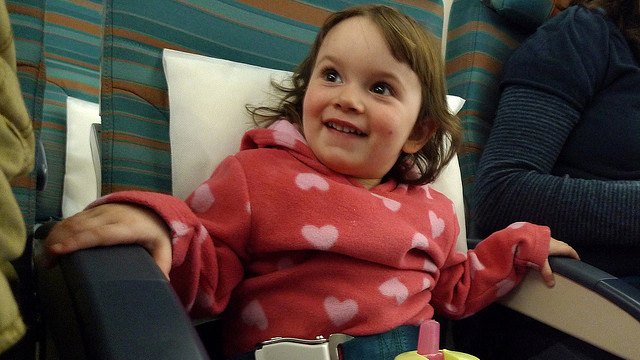
If you’re traveling by air on your summer vacation, you may want to think twice about what surfaces you touch inside the airplane cabin. Or better yet, you may want to drive.
Disease-causing bacteria can linger for days on surfaces in airplane cabins, according to new research results from Auburn University, Alabama. The researchers obtained common materials from the airplane cabin of a major airline: an armrest, plastic tray table, metal toilet button, window shade, seat pocket cloth and seat leather. They tested how long bacteria could survive on these surfaces under the standard airplane cabin conditions of low humidity and room temperature when no cleaning procedures were used.
Specifically, they studied the survivability of two common pathogens: methicillin-resistant Staphylococcus aureus (MRSA) and E. coli O157:H7. They found that MRSA lasted the longest on material from the seat-back pocket, surviving for 7 days. In contrast, E. coli O157:H7 lasted the longest on the armrest material, surviving for 4 days.
Staph skin infections, including MRSA, generally start as small red bumps that often resemble spider bites but these can quickly turn into deep, painful abscesses. Different types of staph bacteria are commonly found on the skin or in the nose of about 30% of the U.S. population, while only 2% of the population are asymptomatic carriers of MRSA. You can get MRSA through direct skin-to-skin contact with an infected wound or by sharing equipment that has touched infected skin. However, these staph bacteria are generally harmless unless they enter the body through a cut or wound, so doctors recommend that you keep wounds covered with dry, clean bandages until healed.
E. coli O157:H7 is a major health problem that affects over 70,000 Americans per year. It causes nausea, vomiting, stomach cramps, fever and bloody diarrhea. The infection can be spread from person to person by fecal contamination, but it usually comes from eating food contaminated with animal or human waste. Doctors recommend eating only well cooked foods, particularly hamburger, and drinking treated pasteurized fluids.
However, MRSA and E. coli O157:H7 are not the most commonly found pathogens on airplanes based on past research studies. For instance, other researchers analyzed samples of 61 commercial airplane air filters to identify all the bacteria present.